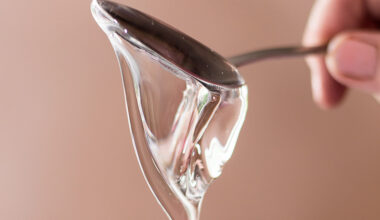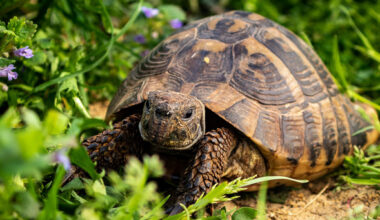Before the cold weather arrives, you must protect your most fragile plants because a single frost can be fatal to them. Different methods exist but the winter burlap is the simplest and most effective protection.
Contents
What is the winter burlap?
The winter burlap or fleece is a kind of very light fabric made of non-woven polypropylene.
Unlike a “plastic” film, it is permeable to air and water, which prevents dehydration of the protected plants. Letting the light pass through, it produces a greenhouse effect which makes it recommended for winter protection.
It is easy to cut and to lay.
Utility of the winter burlap
The 2 first uses of the winter burlap are as follows:
- protect from frost, at the end of winter or in spring, the buds ready to bloom of hardy plants such as camellias or rhododendrons.
- protect from the cold and hasten the early sowing of vegetables (salads, peas, potatoes and all early vegetables).
On the other hand, the winter burlap does not provide sufficient protection for non-hardy plants in very cold weather. Also, the citrus fruits, oleander, olive tree or palm trees cultivated in pot must be winterized (i.e. put out of frost).
If the weather is not cold for a long time, you can place fragile plants against a wall of the house, and protect them behind a screen of wintering burlap (form a frame with some wooden slats). You will gain a few degrees compared to the temperature measured under shelter in the middle of the garden. Let’s say 39°F more, which can make all the difference for frost-sensitive species, if the winter is not too severe.
This fabric is also very weather resistant (hail) and will effectively protect your first seedlings from birds and insects.
When to put on the winter burlap?
Winter is approaching
As soon as the morning frosts come, cover with the veil the sensitive crops in the vegetable garden (lettuce, lamb’s lettuce, watercress, sorrel…).
At the first signs of cold, put the most fragile plants in the garden under cover. Place the veil around fragile, but non-freezing plants: it protects them from cold winds and retains some of the sun’s heat. Insulation is best if the burlap does not touch the foliage: place it on a wooden frame or chicken wire, for example.
During the winter
Check winter protection and ventilate. Take the opportunity to tighten the winter burlap. It should not be too close to the crops and plants: risk of rot…
In March-April
Protecting flowering plants
Some shrubs (especially heather earth, such as early rhododendrons and camellias) are afraid of late frosts. Indeed, they sometimes destroy young shoots and flower buds. The winter burlap will be a precious help.
Also think of sheltering your potted dwarf fruit trees: the full bloom of a dwarf peach tree can be destroyed by a single cold night …
Accelerate seedling emergence
By putting a wintering burlap on your seedlings and young plants in the vegetable garden, you will gain a few precious degrees in the soil, which will accelerate the emergence of seeds and the growth of young plants.
The gain in earliness can reach 10 to 15 days for your carrot, leek, radish, lettuce, bean seedlings…
You will lay the burlap on the ground, leaving some “slack” and maintaining it with 2 boards placed at the ends.
You can also place small pieces to cover your seedling boxes.
In April-May
When late frosts are no longer a concern, you can remove the winter burlap, just like any other winter protection.
Protect your crops with a wintering burlap
A very effective solution against the cold is the winter burlap.
The winter burlap is a white fabric made of non-woven polypropylene allowing your plants and shrubs to gain a few degrees not negligible to their survival.
This winter burlap effectively protects your crops while allowing water and air to filter for optimal development.
This burlap also allows you to obtain earlier sowings.
It is ideal for palm trees and plants with low frost (resistant from 23/46°F to 10/59°C).
You can maintain your winter burlap with pliers, clothespins or wooden logs.
Remember to open your sails from time to time on sunny days to renew the air and avoid humidity and the spread of diseases.
We advise you to install your winter burlap at the first symptoms of cold weather to avoid unpleasant surprises.
And on the other hand, do not remove your protection prematurely in order not to be surprised by the late frosts in March and April.
It is important to protect the top of the trunk of your shrubs.
Summary
At the first signs of winter, well wrapped up under a wintering burlap, cold plants and fragile trees will warm up by a few extra degrees. This very light non-woven polypropylene fabric offers the advantage of being permeable to air and water, thus preventing dehydration of the protected plants. The light is also filtered, which produces a greenhouse effect that is perfectly recommended for winter protection.
In this way, you protect your plantations from frost as well as the buds of your hardy plants ready to hatch. On the other hand, your non-hardy plants (citrus fruits, oleander, olive trees, palms …) must be put out of frost, i.e. overwintered, because the winter burlap will not provide sufficient protection for these more fragile plants.
This veil is also very resistant to weather conditions, such as hail. During the winter we advise you to tighten the winter burlap and to take advantage of it to ventilate a little. It should not be too tight to avoid the development of rot.








